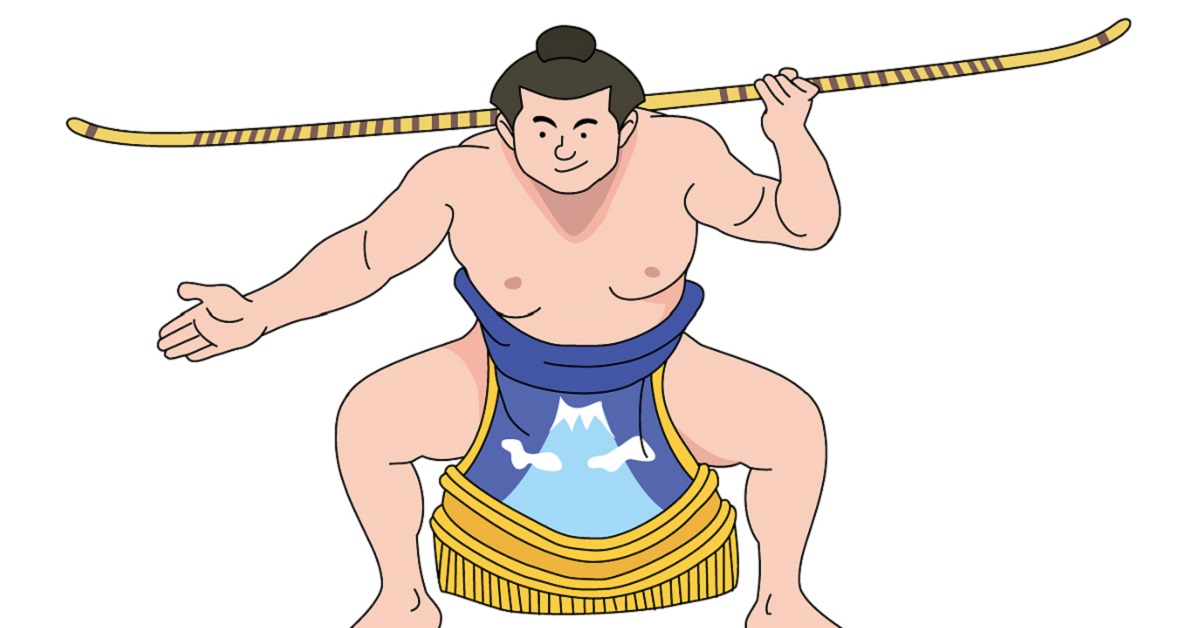The Bow-twirling Ceremony is a traditional ritual held at the end of a Grand Sumo tournament day, where a specially trained rikishi performs elegant and powerful movements with a bow in place of the final match winner. This performance reflects the sacredness of the dohyo and the refined sense of Japanese etiquette and beauty.
What is the Bow-twirling Ceremony
The Bow-twirling Ceremony marks the close of a sumo day and is performed on the dohyo by a rikishi who has mastered formal etiquette. The ceremony is not merely a spectacle; it carries the meaning of honoring the sacredness of the dohyo and signifying the safe conclusion of the day’s matches. The movements of the bow are both powerful and graceful, serving as a gesture of thanks to the audience. For foreign visitors, it is not only an entertaining sight but also a chance to understand the etiquette and spiritual culture behind sumo.
| Item | Details |
|---|---|
| Venue | On the dohyo during the main tournament |
| Timing | After all bouts, just before the day’s close |
| Performer | Selected rikishi with etiquette training |
| Meaning | To honor the sacredness of the dohyo |
| Movement style | Combines strength and elegance |
Role and Cultural Meaning
The Bow-twirling Ceremony serves both to ease post-match tension and to remind spectators of sumo’s nature as a Shinto ritual. The bow’s rotation symbolizes the end of the contest and the purification of the venue, while also expressing gratitude to the spectators. This performance can also be interpreted as a form of sacred dance, sharing the same spiritual essence found in traditional Japanese performing arts and martial arts.
| Aspect | Explanation |
|---|---|
| Ritual aspect | Purifies the dohyo and reports the day’s safety |
| Artistic aspect | Displays beautiful forms and techniques |
| Social aspect | Builds a shared moment between wrestler and audience |
| Educational aspect | Teaches younger rikishi etiquette and form |
Requirements for Performing Rikishi
The rikishi chosen for the Bow-twirling Ceremony must have impeccable etiquette, stable posture, and a refined presence. Most often, wrestlers from the lower divisions are assigned the role as part of their training, but senior wrestlers sometimes perform, adding depth and sharpness to the movements.
| Requirement | Description |
|---|---|
| Mastery of form | Accuracy of bow swings and positions |
| Posture | Straight back and controlled movement |
| Mindset | Awareness of the ritual’s sacredness |
| Continuous training | Years of dedicated practice |
Procedure and Highlights
The Bow-twirling Ceremony follows these steps:
- The performer enters the dohyo in place of the winner
- Receives the bow and bows deeply
- Performs vertical and horizontal rotations of the bow
- Concludes with a deep bow before leaving the dohyo
Key highlights include the bow’s rotation speed, the fluidity of wrist movement, and the performer’s steady posture. These are not mere feats of strength but movements perfected through years of training.
| Highlight | Reason |
|---|---|
| Bow rotation | Blend of skill and power |
| Wrist control | Smoothness and precision |
| Footwork | Balance and elegance |
| Depth of bow | Respect for the audience |
Viewing Tips for Foreign Visitors
Foreign visitors should view the Bow-twirling Ceremony not as simple entertainment but as a performance rich in cultural significance. Appreciating the beauty of the movements and the calm atmosphere after the bouts deepens the experience.
| Tip | Detail |
|---|---|
| Learn the meaning of the movements | It is a ritual of Shinto purification and gratitude |
| Observe the beauty of form | Rotation of the bow and the stability of posture |
| Focus on expression | Combination of seriousness and calmness |
| Photo timing | The moment the bow is held high is most photogenic |
Conclusion
The Bow-twirling Ceremony is a solemn yet beautiful ritual that closes a day of sumo, embodying Japan’s etiquette and traditional aesthetics. Understanding the meaning of the movements allows the audience to experience a deeper emotion distinct from the excitement of the bouts. For foreign visitors, it offers a rare opportunity to connect with the essence of Japanese culture.





コメント